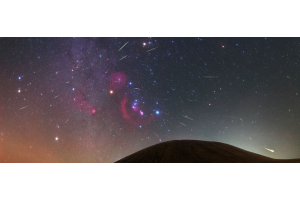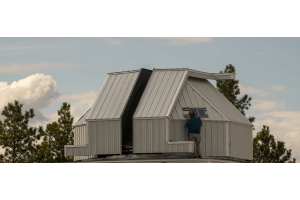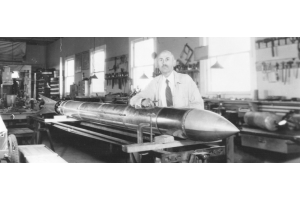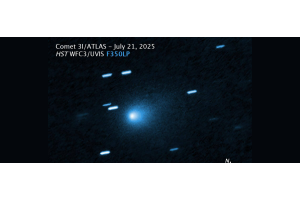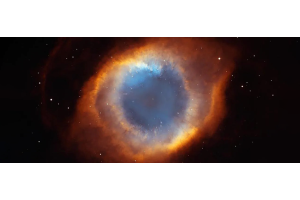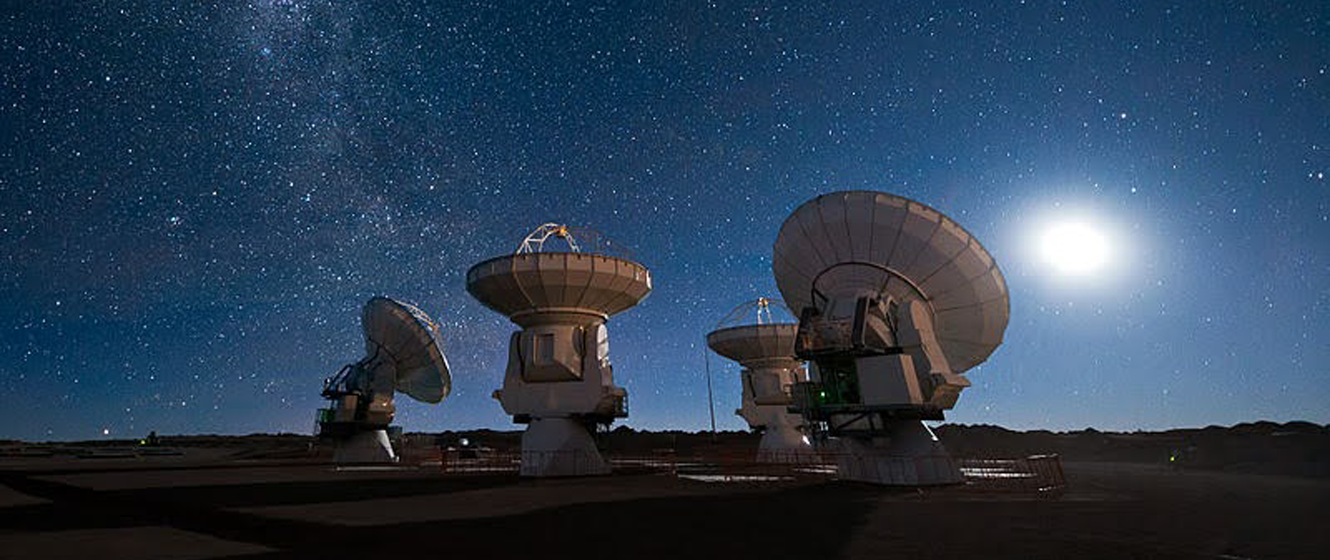
Looking up into the sky, you might think the Sun is a very large star. After all, it’s 93 million miles away; yet it has the same size in the sky (also known as angular size) as the Moon. And you’d be right - at least in comparison to the Moon and planets, the Sun is very, very large. However, even the Sun pales in comparison to some of the stars in just our own Milky Way. The Atacama Large Millimeter/submillimeter Array (ALMA) has provided groundbreaking observations of R Doradus, a red giant star located about 200 light-years away in the constellation Dorado.
These observations of this star represent a new milestone in understanding this stage of stellar evolution, where lower-mass stars like R Doradus begin to shed their outer layers. Studying these types of stars, especially through high-resolution instruments like ALMA, helps astronomers better understand how stars transition from their main sequence phase to their final stages as white dwarfs or even planetary nebulae. The ALMA observations of R Doradus, in particular, offer unprecedented insights into the convective processes that shape the outer layers of evolved stars.
Observations of R Doradus
The ALMA telescope's observations of R Doradus provided detailed insight into the convective processes occurring on the surface of this evolved red giant star. The interferometric images captured reveal a stellar disk marked by prominent small-scale features, indicating complex surface motions. Convective bubbles have been observed on the surface of stars previously, but the new ALMA observations track the motion of these “bubbles” in a new light. These convective cells, each about 0.72 astronomical units in size (or roughly the same distance as Venus from the Sun), offer a detailed look at how energy is transported through the star’s outer layers. Unlike more massive stars, where convection may manifest as larger, more turbulent features, the smaller convection cells on R Doradus suggest differences in the mechanisms of energy transfer between lower-mass and higher-mass evolved stars. The surface velocity measured on R Doradus varies between -18 km/s and +20 km/s, signifying active, dynamic motions in the star's outer layers, with a convective timescale of around one month.
This short timescale points to fundamental differences in the way convection operates in red giants like R Doradus compared to more massive red supergiants. In supergiants, convection is often more chaotic and on a much larger scale. The discovery of these smaller features on R Doradus is significant because convection plays a crucial role in stellar evolution. It influences how stars lose mass and how they eventually return elements formed in their cores through nucleosynthesis back into the interstellar medium. These elements then contribute to the formation of new stars and planets, making convection an essential process not only for the lifecycle of stars but also for the enrichment of the galaxy as a whole. The ALMA observations of R Doradus offer key data for refining models of stellar convection and expanding our understanding of how stars evolve as they near the ends of their life cycles.
When Do Stars Become Large?
The expansion of stars like R Doradus as they evolve is a key feature on the Hertzsprung-Russell (H-R) Diagram, a fundamental tool in astrophysics for classifying stars according to their luminosity, temperature, and evolutionary stage. On this diagram, red giants like R Doradus occupy a region in the upper-right corner, signifying stars that are cooler yet highly luminous due to their large size. As stars evolve and exhaust the hydrogen in their cores, they move off the main sequence (where the Sun currently resides) and enter this red giant phase. In this stage, nuclear fusion in the core slows down, reducing the outward pressure that balances gravity. As a result, the core contracts, but the outer layers expand dramatically, causing the star to swell to hundreds of times its original size.
In contrast, the Sun, which currently sits along the main sequence of the H-R Diagram, will eventually follow a similar path but on a smaller scale. In roughly 5 billion years, the Sun will enter the red giant branch, where it will expand, though not nearly as much as larger stars like R Doradus or Betelgeuse. While the Sun may eventually grow large enough to engulf the inner planets, including possibly Earth, its fate will be much more modest than that of the most massive red supergiants. Stars like Betelgeuse, VY Canis Majoris, and Mu Cephei, with masses ranging from 10 to 40 times that of the Sun, exhibit far more intense fusion processes in their cores, generating enormous amounts of energy that force their outer layers to expand to incomprehensible sizes, often up to 1,000 times the diameter of the Sun.
These massive stars are much higher up on the H-R Diagram, in the red supergiant region, and they also burn through their nuclear fuel far more rapidly than the Sun. Consequently, they have shorter lifespans, often only a few million years, compared to the Sun's expected 10-billion-year life cycle. The dramatic size difference between the Sun and stars like Betelgeuse or R Doradus underscores the profound impact that a star’s mass has on its evolution. While the Sun will end its life as a white dwarf after a relatively calm shedding of its outer layers, stars like Betelgeuse and R Doradus will likely undergo more violent ends, with supergiants often exploding in supernovae, releasing their enriched material into space and contributing to the cosmic cycle of star formation.
To sum it up, ALMA’s observations of R Doradus have provided a critical look into the convective processes occurring in evolved stars while at the same time providing a stunning glimpse at the surface of another star. By comparing the relatively small convection features on R Doradus to the larger, more chaotic convection zones of supergiants, astronomers can further refine models of stellar evolution. These findings contribute to our broader understanding of how stars of different masses behave in their later stages and how they return enriched material back into the interstellar medium, playing a crucial role in the cycle of star formation and destruction in the Milky Way.

Learn More
Interested in diving deeper into the world of astronomy? Check out our Astronomy Hub for a wealth of articles, guides, local resources for planetariums and observatories near you, and more to enhance your stargazing experience.










